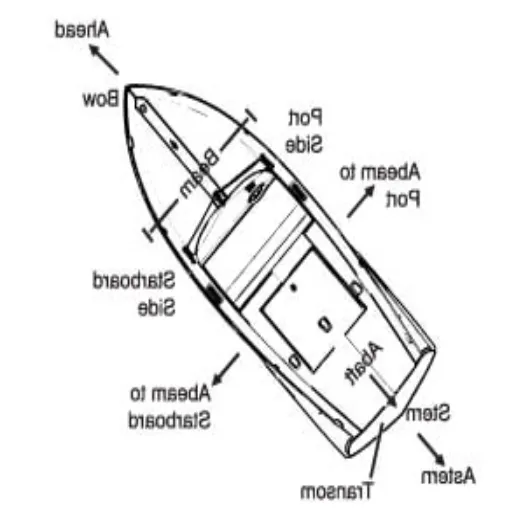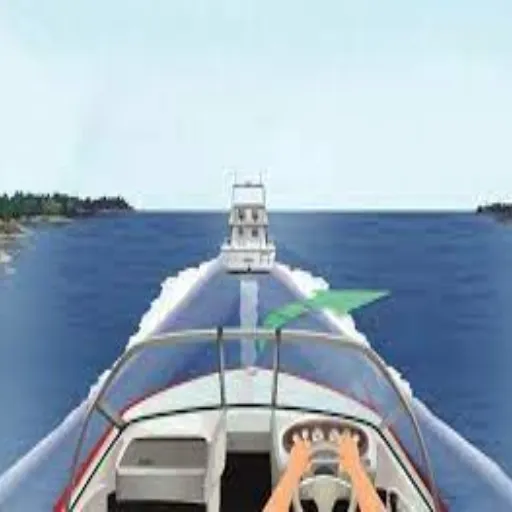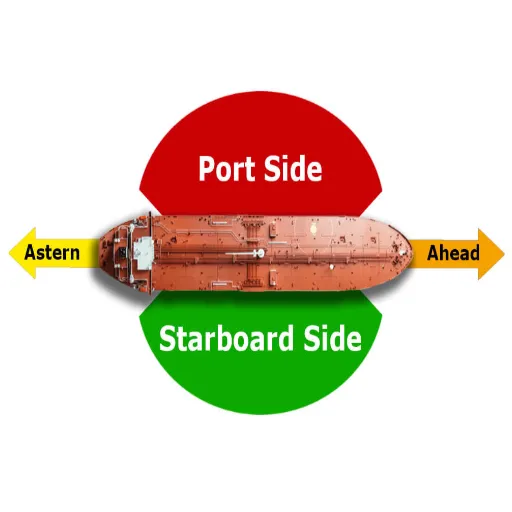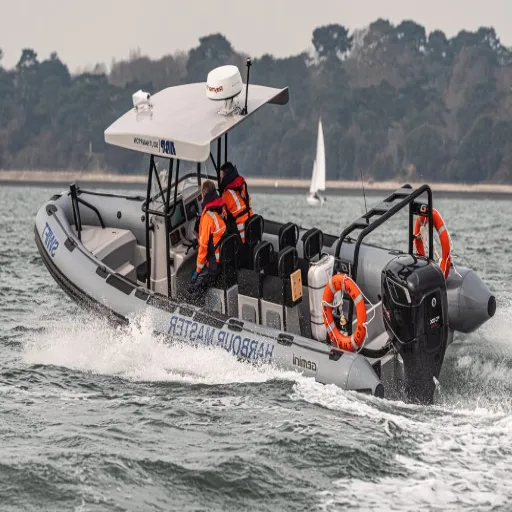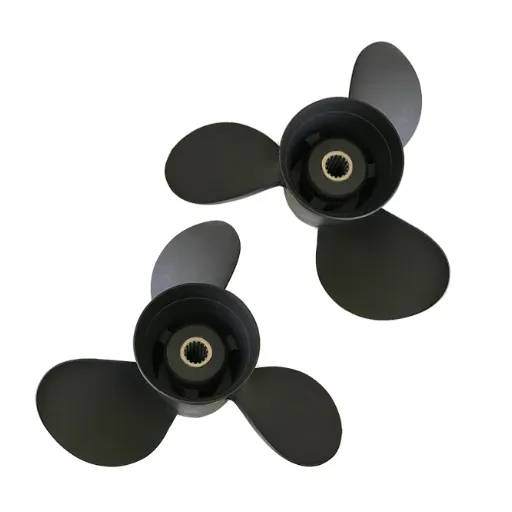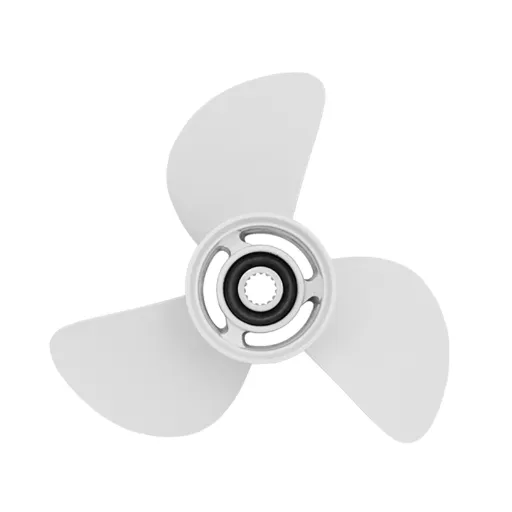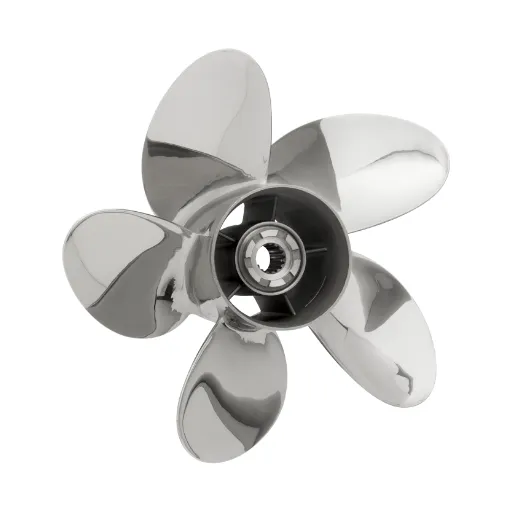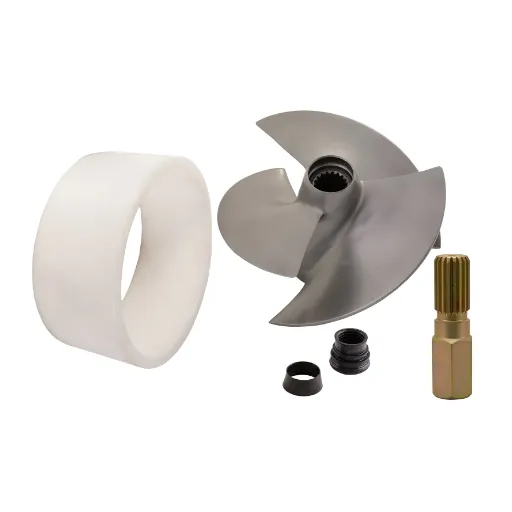To master the art of boating, one must be familiar with maritime terms and conventions, which ensures safety and efficiency on the water. Among others, the starboard side of a vessel is essential when it involves navigation and communication, and even in emergencies. Understanding what starboard means can make all the difference in your boating experience, whether you are an old salt or a newbie who is opening the seas for the first time. This article will get you down to the basics of the starboard side and its importance in safe navigation, adherence to maritime regulations, and clear communication on the water. By the end of this article, you will have gained insights that can help build your confidence as a boater and help you give priority to safety during all your sailing activities. Stay with us as we go through everything that you must know to make all your boating ventures in 2025 a success and safe affair.
Introduction to Boating Terminology
🧭
What Is Meant by Starboard and Port?
Anyone yearning to build upon their knowledge of boating needs to understand what “starboard” and “port” mean. Starboard is the right side of a vessel if someone looks forward toward the bow, while port is the left under the same circumstances. These descriptions facilitate accurate communication between members of the ship’s crew, especially during complex maneuvers or adverse maritime conditions.
💡 Navigation Light Standards: To standardize methods for navigation lights, the International Maritime Organization has established specific requirements. These regulations help identify the two sides at night or under limited visibility. Typically, green lights indicate the starboard side, and red lights denote the port side.
With this knowledge, boat operators will be able to determine the direction of an oncoming vessel and take appropriate action to avoid a collision. Using these terms leaves little room for error, as replacing ambiguous directions like “left” or “right” can be problematic, as they may shift depending on the view installed. By mastering this terminology, boaters can significantly enhance their navigation skills and thereby contribute to maintaining safer waterways for everyone.
⚓
The Importance of Knowing Your Sides
Learning the port and starboard sides of a vessel is essential for sailor safety and navigation. One must combine the knowledge with extra tools and strategies that enhance situational awareness on the water. Modern digital navigation systems and radar technology may provide real-time information about nearby vessels, underwater hazards, and weather patterns. Still, they are useless if the mariner cannot understand and act upon the data presented. Situational awareness, combined with a thorough understanding of nautical language, enables the tools to be seamlessly integrated into their decision-making process, thereby decreasing response time and risk during communications.
To reiterate some of these terms, the more internationally well-known maritime regulations, such as the COLREGs, also place a special emphasis on knowing them perfectly. Communication becomes essential in signaling intentions to other vessels or interpreting the maneuvers of others. To cite a sample situation: If two boats are on a collision course, when you know where the starboard side is, and you identify a possible passing zone, you have already half-resolved a navigation situation or prevented an incident. When these terms are learned and understood through practice and training, the outcome will be a safer environment on the water and instilling confidence in all seafarers.
📚
Common Boating Terms Explained
Interpreting these key boating terms facilitates communication, safety, and precision in the water. Essential terms any boater must know of include:
By fixing these terms in your vocabulary, not only will you be given a boost in boating knowledge, but you will also attract safe and constructive communication on the water. With changes in maritime terminology and standards, updates will help keep you informed as you navigate or plan your next excursion.
Navigating with Confidence: The Starboard Side
⚡
The Understanding of the Right Side of a Boat
Starboard is considered the right side of a boat when one is facing toward the bow (fro) of the vessel. This word is very important to navigation, as it conveys directions and rules of the road at sea. Typically, the starboard side features green navigation lights, while the port side displays red navigation lights. These lights become essential in determining right-of-way or avoiding collisions at night or in conditions of reduced visibility.
📜 Historical Origin: The origin of the word “starboard” is recognized as coming from Old English, with “stēor” meaning “steer” and “bord” meaning “side of a ship,” as early vessels were steered using a paddle on this side.
Today, after significant evolution, the distinction between starboard and port is still a fundamental part of the subject. For safe navigation, it is imperative to understand the signals and markings relating to the starboard side. For example, if two contrarotating vessels cross each other, the one to the starboard side shall be given precedence in crossing. Familiarity with such practices helps you navigate more confidently and effectively, while reducing the risk of accidents in busy waterways.
🎯
Fixed Locations on a Vessel: Where is Starboard?
The starboard side is the right side of a vessel when facing forward (towards the bow). Knowing and fixing this one reference is essential, as the starboard side exists irrespective of vessel orientation or the direction in which it travels. The origins of the term “starboard” stem from the fact that in the early days of shipbuilding, vessels were steered using a large oar or “steering board” that was fastened to the right-hand side of the boat. To further communicate in the dark, green lights are exhibited on the starboard side to allow other vessels to spot and align correctly with the maneuvering vessel.
It is essential to understand and recognize the location of the starboard in order to comply with international navigation rules, such as those set by the International Regulations for Preventing Collisions at Sea (COLREGS). Two power-driven vessels meeting each other head-on are supposed to turn to starboard, to pass port side to port side. The term starboard is a fixed term and stands for all vessels, from a small yacht to a huge cargo ship, to afford universal consistency for maritime safety.
Being able to identify starboard correctly has repercussions in onboard operations and emergency procedures. Starboard-specific nomenclatures for items or areas-lifeboats, rigging equipment, or docking brackets-keep their names irrespective of the heading of the vessel. This very consistency creates fewer opportunities for confusion amongst both crew and passengers and improves coordination during periods of docking, maintenance, or emergency. When understood in their practical application, these concepts help situate the starboard, enabling safe and efficient operations in all scenarios.
🛡️
Boating Safety: Why Starboard Matters
Starboard, very much like port, is a pivotal subject in bringing safety and communication down to a level easy for boatmen to understand. Navigation accidents display their emphasis traits. For instance, the boat that comes alongside from the right or starboard side should dispose of any doubt of the right of way in that particular circumstance. This simple rule thereby clears all doubts and orders the movement of vessels through comparisons on the congested waterways.
⚠️ Safety Statistics: Through statistical studies, it is demonstrated the importance of adhering to these safety rules. It was visible in reports that the failure of procedure, for instance, yielding to starboard, stands as one of the highest reasons for maritime casualties.
Undoubtedly, with more reinforcement of policies regarding starboard and adequate education on the importance of starboard, sailors can significantly reduce the risk to their safety. Additionally, knowing the duties of the starboard would not be sufficient to safeguard journeys; it would also ensure an equally worthy preservation of maritime discipline.
Starboard and Port: Key Differences
🔍
Identifying Port Side Versus Starboard Side
| Aspect | Port Side | Starboard Side |
|---|---|---|
| Location | Left side when facing forward | Right side when facing forward |
| Navigation Light Color | Red | Green |
| Etymology | From “port” (docking side) | From “steorbord” (steering board) |
| Memory Aid | “Port” and “left” both have 4 letters | Remaining right side |
The port and starboard distinction needs to be understood for successful communication and safety at sea. The port side is understood as the left-hand side of a ship when facing forward (toward the bow), whereas the starboard side stands for the right-hand side. These terms remain constant irrespective of an observer’s orientation, eliminating any confusion during navigation and operations.
The term “starboard” originated as a corruption of the Old English steer-board, as in the early days, vessels were controlled with a steering paddle on the right side. Civilized docking on the west side gave rise to the term “port” being used for the left side.
Recent research has further emphasized the importance of clear differentiation between port and starboard in congested waterways, while also guaranteeing adherence to international maritime codes, such as the International Regulations for Preventing Collisions at Sea (COLREGs). In these laws, vessels must duly light, signal, and give way to other ships to maintain safety and order on the water. By gaining deeper insight into these core phrases being used and applied, the navigators may thus boost navigational accuracy and observance of established maritime best practices, which in turn meaningfully reduce casualties and allow for smoother journeys.
🧠
Memorable Ways to Differentiate Port and Starboard
Naval activities require spontaneously being able to identify and direct persons toward the proper side of the ship; therefore, one must easily differentiate between port and starboard. Of course, the well-known word association goes like this: “port” and “left” both have four letters, and the port side is simply the left side of the vessel when facing forward. Starboard refers to the right side, naturally.
Why not add an extra level of understanding by weighing the historical roots of the terms? Starboard is derived from “steorbord,” meaning the side on which the steering oar was placed, before the rudder became standard, traditionally the right-hand side. Thus, docking would be made easier by having all steering equipment on the starboard side so that the dock would be on the left.
Further accentuating the distinction are diagrams on the board. For example, the port side is lit with red lights, and the starboard side is lit with green lights, as mandated by international maritime law. Coupling this visual mnemonics with firsthand exposure to vessel layout and lighting renders the distinction between port and starboard almost second nature for both pilots and crew, further smoothing communication and creating a safe passage for all.
⚠️
Common Mistakes in Nautical Navigation
1. Failure to Account for Currents or Drift
Ocean currents and wind drifts are among the natural forces that can move vessels off their intended course. Such mishaps sometimes result in grounding or collisions. A marine navigator should always compute the set and drift and adjust the heading as required for accurate positioning.
2. Over-Reliance on Electronic Aids to Navigation
GPS, chart plotters, and radar have changed the way we navigate, but a dependence on them can breed complacency. Technology may fail if it lacks a signal, battery, or suffers from software glitches, leaving those without basic knowledge of charting to be stranded. A basic understanding of paper charts and traditional tools would enable the navigator to work effectively in all scenarios.
3. Poor Interpretation of Weather Forecasts
Misjudging the weather conditions is another typical oversight. Sudden changes in weather, such as squalls or heavy fog, can significantly reduce visibility and compromise the vessel’s handling characteristics. Therefore, for safe passage, decisions must be made based on the information obtained from up-to-date weather forecasts.
4. Disregarding Collision Avoidance Rules
One frequent lapse is failing to follow the Colregs, mainly when navigators must operate in a traffic-dense area. Misinterpretation or faulty application of the rules regarding right-of-way may bring perilously close quarters. Keeping a watchful eye on traffic-related issues and being proficient in Colregs will hence be advantageous in mitigating risk.
5. Avoiding Voyage Planning Error
Inadequate pre-voyage planning may expose sailors to unexpected challenges. These less famous mistakes overlooked precautions such as plotting courses, anticipating hazards, or allowing a sufficient safety margin. A good plan entails identifying potential obstacles, calculating fuel requirements, and plotting emergency anchoring locations.
✅ Prevention Strategy: Preventing such errors requires a solid foundation of knowledge, effective leveraging of modern technology, and adherence to best practices. Continuous training, maintaining situational awareness, and combining real-time data can enable seafarers to make informed decisions when transiting waterways safely.
The Role of Starboard in Navigation
💡
Navigation Lights: Starboard Side Indicators
Navigation lights ensure safe seaborne operations, making it especially important during nighttime or in misty or foggy weather. Green in color, the starboard-side navigation light must be on during the vessel’s operations to signal other vessels its orientation and direction. The light is designed to be visible ideally at an arc ranging from 112.5 degrees, with due regard for proper positional regulations to avoid any confusion that could lead to adverse interpretation.
🔧 Technology Update: The latest developments in marine technology have introduced marine-grade LED lighting for navigation, offering improved visibility and durability compared to conventional lights.
Additionally, these starboard navigation lights must be properly maintained, as dim or malfunctioning lights can cause miscommunications between boats, leading to potential collisions. By adhering to international standards, such as the Convention on the International Regulations for Preventing Collisions at Sea (COLREGs), marine operators operate within established guidelines and promote safer navigation in congested waterways and beyond. The integration of these precision and technology elements globally elevates maritime safety practices.
🚤
Integrating Starboard into Safe Boating Practices
Considered the right-hand side of a vessel when facing forward, the correct usage of this word or phrase is a matter of safety in navigation. Instances of starboard use also permit clear communication; that is, when situations arise that require agreements to pass or collisions to be averted. For instance, in head-on approaches, vessels are bound by the international regulations to alter course starboard for safe passage. In addition, for overtaking maneuvers, starboard lights are an essential indicator showing a vessel clearly from where the other is overtaking and the direction in which the ship is moving.
Starboard practices have, further, been fostered by contemporary navigational facilities. Advanced machinery, such as radar overlay systems and the Automatic Identification System, helps mariners keep track of surrounding vessels, allowing them to anticipate challenges and reduce the likelihood of possible judgment errors. With these tools, paired with a thorough understanding of the rules, a recreational civilian or commercial boater should be able to have maximum enjoyment, with safety being paramount.
⚠️
Navigational Errors and the Starboard-labeling Approach
It’s my understanding that starboard navigation incidents stem primarily from some miscommunication, training deficiencies, or outright noncompliance with maritime regulations. The fundamental first mistake is the misinterpretation of “starboard and port passing” protocols, which may nearly cause a collision or create disorderly traffic within busy waterway areas. Delays, even the small ones, together to yield or intent to pass on the starboard, take any level of risk higher in congested shipping lanes. Moreover, another frequent issue that creates confusion between vessels or among crews is the misunderstanding of starboard priority rules, such as giving way and stand-on vessel assignments.
Modern data emphasizes the importance of well-structured training programs tailor-made to simulate real-world scenarios of starboard navigation, focusing on rapid decision-making under pressure. Collaborative instruments, such as an assisted navigation tool, may also help decrease such errors by enhancing communication and ensuring that both parties understand starboard maneuvers concerning their boat. The technologies, especially AIS and radar overlays, contribute to accurate navigation. However, relying too heavily on automation in accident avoidance, while ignoring the human factor, has also contributed to an avoidable accident. Hence, there is a growing insistence among maritime parties that starboard protocol should be supported not only by the most technically advanced tools but also by sound navigational skills.
Trends in Boating for 2025
🚀
Advances in Boating Technology
From my perspective, the water domain is expected to undergo rapid changes in 2025, driven by a combination of innovative solutions and pragmatic approaches. The most exciting realization of this is AI-incorporated navigation systems, which enable better route optimization, real-time weather analysis, and collision prevention. These intelligent navigation systems enhance the safety of the craft being operated and are also intuitively able to determine when to reduce fuel consumption to maximize the use of a given route or system; they provide crystal-clear insight into the planning and navigation processes to any captain or crew. Electrification is also in the spotlight, making the all-electric propulsion system a widespread sustainable option without losing capabilities or speed.
🔮 AR Innovation: Another key innovation is the use of augmented reality (AR) in navigation systems. AR overlays provide the mariner with an interface that interacts with the environment: information, such as hazard warnings or docking instructions, is displayed directly onto the windscreen or on the control screens.
When combined with IoT sensors, vessels can now conduct real-time diagnostic assessments that enable the anticipation of maintenance, thereby reducing the likelihood of major mechanical breakdowns. With these technological advances, it seems as though technology is trying to bridge the gap between traditional boating and the smarter, more sustainable world of today. However, I firmly believe that there needs to be a balance, where core skills are maintained and users are trained to operate these tools in the most effective way possible. It is through innovation that all get ahead; yet, the human factor will forever remain an integral part of the maritime experience.
🛡️
Safety Trends: Enhancing Awareness of Port and Starboard
The function of port and starboard should be a principal boatmanship concept taught to every boater and seafarer alike. I emphasize the reinforcement of this basic awareness because it straightforwardly affects the prevention of accidents and clear communication on board. Otherwise, accident-prone situations can occur in bustling waterways, resulting from an elementary misunderstanding or confusion with these directional terms. Through drills and training, I ensure that everybody, regardless of their experience level, feels confident about the situation.
I’ve found that combining equal amounts of technology with traditional study methods is the way to go. For example, navigation apps and indicating lights for port and starboard are great tools, especially for those just learning or when the weather is adverse. However, there will always be at least a percent on my mind that one should never rely too much on any tool, just in case something goes wrong with the software. Core knowledge must always be there as the back burner. For me, this is the delicate balance of innovation with core seamanship that will always prioritize safety while fostering a culture of preparedness and shared responsibility on board.
📖
Shortly: Learning the Basics
The future of boating education lies at the convergence of age-old knowledge and new technology. I would insist that learning the basics of anything should always remain an essential foundation for any aspiring boater. Navigation, seamanship, safety, and weather are all things that a person needs to know to feel confident and deal with any given situation on the water. In traditional boater training, boaters are guided through the content to establish their core knowledge, while their skills are strengthened through hands-on experience. This footing serves as a reliable anchor when the technology fails.
On the other hand, learning landscapes are now being reshaped with the presence of modern tools and digital resources. Online courses, simulations, and mobile apps provide learners with easy access to critical information and necessary practice. For instance, virtual-reality (VR) training can simulate docking or emergency handling, allowing learners to experience it in a controlled setting and then apply their skills practically on the water. From my perspective, such computer-based learning technologies complement traditional forms of training to provide a more accessible and well-rounded learning experience.
Finding that perfect balance between these approaches is the key. To me, boating education should combine a respect for traditional, time-tested fundamentals with an open approach towards embracing techniques and technologies that enhance safety or efficiency. In short, if a boatperson can find that balance, they will be well prepared to adapt as their environment changes, develop the capacity to meet unexpected challenges head-on, and finally, fully embrace the freedom and responsibility offered by the spirit of being out on the water.
Reference Sources
- Port and Starboard: A Complete Guide for Boaters – Captain’s Preferred Products
Offers a detailed guide on the meanings of port and starboard, navigation tips, and common mistakes to avoid. -
Beginner’s Guide to Understanding Port and Starboard – Saltwater Journal
Explains the conventions of port and starboard, including the use of red and green lights for navigation. -
Which Side Is Starboard vs. Port for a Boat? – Boat Ed
Provides a clear explanation of the starboard and port sides of a boat, with practical examples. -
Aids to Navigation – BoatUS
Discusses starboard side buoys, their numbering, and how they assist in safe navigation. - Click here to read more.
Frequently Asked Questions (FAQs)
❓ What is the starboard side of a boat? How different is the starboard from the port side?
If facing the bow of a vessel, the starboard side refers to the right side, whereas the port side refers to the left side. This usage eliminates confusion, particularly in navigation and communication. Boaters must remember that port and starboard terms should be used, rather than left and right, as using the latter could lead to accidents. The location thus defined is used to identify each side of a vessel and is essential for the communication of crew members. Being aware of the port and starboard sides is key to safe navigation, especially when coming alongside another boat or a dock.
🧠 How do I remember the difference between port and starboard?
A good way to remember the difference between port and starboard is to associate the word “port” with red, as port-side lights are typically red. Then, since starboard is on the right side of the vessel, keep in mind the fact that those lights are green. Using port and starboard instead of left and right will help reduce the confusion that can occur on the water. Another way is to go back to Old English and remember larboard and starboard, where larboard referred to the left side. Being familiar with these nautical terms will only make learning to boat easier and much safer on the water.
🧭 What parts of the boat are essential for navigation?
What are the essential components of a boat for navigation? The rudder helps in steering, and the lights are crucial to making the vessel visible during nighttime boating. Green lights are usually placed on the starboard side, while red lights are on the port side. To properly handle the boat, one must be familiar with its various components, including the steering oar and other essential navigation aids. Knowing the sides of the ship, such as the starboard side, helps avoid collisions and ensures safe navigation. These lessons will significantly enhance your enjoyment of boating.
⚡ What implications do the starboard and port sides have for the safety of navigation?
Boating is safer when the starboard and port sides of a boat are acknowledged. Be conscious of your surroundings and right-of-way situations, especially when approaching another vessel. With port and starboard understood, it will be easy to communicate with fellow crew members, thus avoiding confusion. Avoid operating without proper lights on the starboard side at night. Following boating safety guidelines and using proper terminology will significantly reduce the chance of collisions and provide a safer environment for being on the water.
📢 Why is it essential to use correct nautical terminology like starboard side?
Correct nautical terminology is used for clear communication among boaters. Such terminology could land someone into an accident and collisions, especially on busy waterways or during the docking maneuvers. Learning such terms not only helps one learn about boats but also enables one to convey information accurately. This becomes very important when sailing on unfamiliar waters or communicating with other vessels, and being clear when using terms like ‘starboard’ or ‘port’ goes a long way in avoiding confusion and further ensuring the safety of boating.
🎓 How can I improve my navigation skills on the starboard side of a boat?
Training navigation skills on the starboard side of a boat requires the use of the steering oar and knowledge of navigation lights. Familiarity with your vessel’s layout, including the right side of the ship, will help you steer effectively and safely. Increasing your knowledge of the right and left sides of the boat and their relation to port and starboard may enhance all aspects of your navigation skills. Boating safety classes will also equip you with helpful information on the parts of the boat that affect navigation. Continuous training will always keep you informed and eliminate the feeling of inadequacy that comes with navigating unfamiliar territory.




